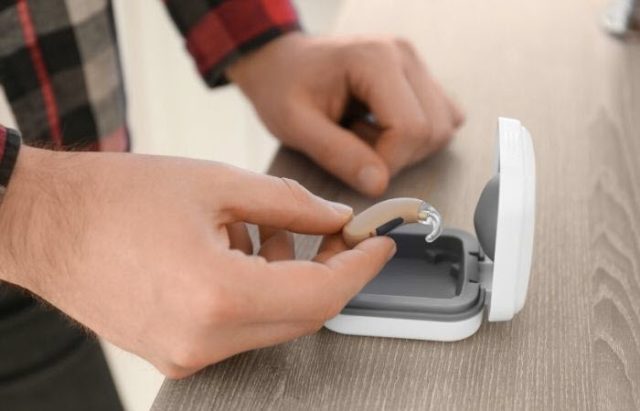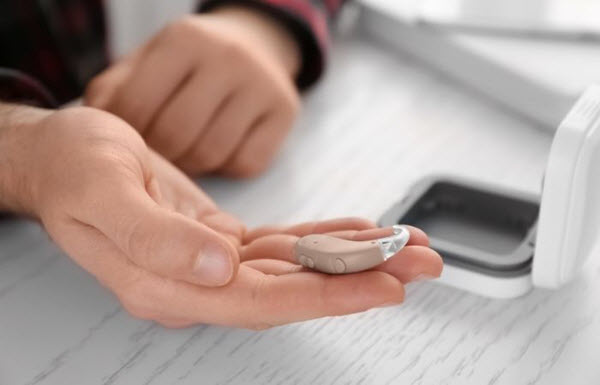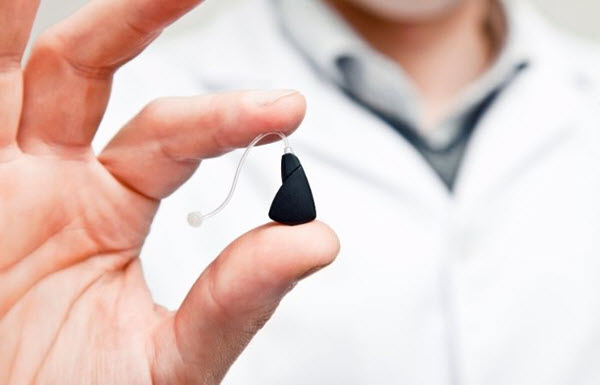Hearing Aids: Expectations vs Reality

“A hearing aid is an ultra-miniature electro-acoustical device that is always too large. It must amplify sound a million times but bring in no noise. It must operate, without failure, in a sea of perspiration, a cloud of talcum powder, or both. It is a product that one puts off buying for ten years after he needs it but cannot do without it for thirty minutes when it has to be serviced.” – Attributed to Samuel Lybarger. Modified by Wayne Staab with Sam’s approval, for Audiotone in 1979.
It seems like a tall order, doesn’t it? Although we are living in an era with many advancements in hearing aids, it still is not perfect and has many drawbacks.
I have been diagnosed with moderate to severe sensorineural hearing loss at the age of ten. This means that my hearing loss is caused by nerve damage, something for which there is no cure.
Hearing loss is a complex issue with various causes, and not all children are lucky enough to be able to manage in a mainstream school. Many must go through special education channels, often severely limiting their career opportunities.
What is the difference between being deaf and being Hard of Hearing (HOH)?

According to the article “Deafness and Hearing Loss” by the World Health Organization (WHO), deafness implies profound hearing loss. This means that you have little or no hearing, and you use sign language for communication.
Hearing loss covers a spectrum from mild to severe. This means you do still have a certain degree of hearing and can communicate through the spoken word. You benefit from assistive devices such as hearing aids and cochlear implants for improved hearing.
How do hearing aids help the Hard of Hearing (HOH)?
Hearing aids improve hearing and enable better communication. Therefore, I could attend a mainstream school, go to college, and have a fulfilling career.
But, most importantly, it saves you from a life lived in silence – it enables you to communicate or participate in social interactions.
For many years I have worn analogue hearing aids and was only fitted with my first set of digital hearing aids in my early forties.
What is the difference between analogue and digital hearing aids?
Analogue Hearing Aids

Analogue hearing aids assist with hearing by increasing the volume of sounds. This process is not selective. It means that all sounds are enhanced – those we can hear, as well as the sounds we cannot hear.
Imagine trying to listen to a voice against this backdrop of enhanced noise.
A drawback of analogue hearing aids is acoustic feedback. This whistling sound is not only irritating but also interferes with communication, affecting our ability to hear.
Feedback is caused by several factors like:
- When the earpiece is not inserted properly.
- Another object comes too close to the hearing aid. For example, when talking on the phone.
- The movement of muscles around the ears when laughing or eating.
- Increasing the volume in challenging situations to try and hear better.
There is no easy solution: turning the volume down can help but defeats the purpose. In certain situations, there are simply no alternatives and you must just make the best of it.
Telephone conversations are hard enough, without the ability to read lip or body language.
But imagine you are having a telephonic conversation and suddenly there is nothing! Only silence… Without warning your battery has just died, all you can do is to interrupt, telling the other person your dilemma and promise to call them back.
Due to the limited range of analogue hearing aids, it means that it needs to be replaced once your hearing loss falls outside that range. The average is every five years, and together with the batteries, is an expense that needs to be budgeted for.
Digital Hearing Aids

Getting digital hearing aids can be a life changer! Instead of increasing volume, it is designed to make sound clearer. It creates a completely different type of sound. It is like comparing analogue radio to stereo.
This can be best described by several memories after I have been fitted with my first pair of digital hearing aids.
I turned it on as an ambulance went past. Where analogue hearing aids would have increased the volume to an unbearable level, now it was just a noise outside.
Imagine going for lunch with your husband in a busy shopping mall. Where previously you could not talk much – because all the noise drowned out your companion’s voice – this time will be completely different. Thanks to the noise-reduction feature of the digital hearing aid, you can hear him talk to you. Not only that, but you can also actually hear people talking at nearby tables. Even though you cannot follow their conversation, you can hear them. Much better than just being bombarded by constant noise!
At home, you keep on asking about little noises that you cannot identify. All the noises that previously you could not hear. Simple things like a dripping tap or hearing your dog when walking on the tiles.
Feedback is also greatly reduced, and only becomes a problem if you must increase the volume.
Digital hearing aids create a better hearing experience because it can be fine-tuned to your exact hearing profile. It is also possible to create different profiles, for example, a general profile for everyday use or a profile for noisy environments with enhanced noise reduction. And you can even have a profile for watching TV or going to a concert, resulting in a more stereo-like experience.
Another important profile is for using the phone. The telecoil feature will increase the volume in the one ear you use on the phone and reduce the volume in the other.
Unfortunately, this feature did not work so well for me, so I must switch over to this profile manually.
A huge benefit is that digital hearing aids give you a warning (about twenty minutes) when the battery is going low. This is enough for most situations, like ending your phone call. Or, excusing yourself from your present company.
Digital hearing aids have a much bigger range. So, unless something drastic happens, it will always be able to accommodate your hearing profile. That is, for as long as the physical components last.
Therefore, you would expect to be able to wear your digital hearing aids for a longer time. Unfortunately, this is not the case. Since parts are only available for a limited time, hearing aids cannot be repaired indefinitely.
Digital hearing aids are costly! This means that you need to immediately start saving for your next set. However, considering how it improves your quality of life, it is worth every cent.
Although robust, they still do not fit the bill 100%. They need to be cleaned regularly to avoid damage from moisture (perspiration) and no swimming or showering with it! Also, the ingredients of the disinfectant we constantly use because of the pandemic clogs up the speakers on the hearing aids. And talcum powder – not even close!
Do you find that that you often struggle to hear? Have a hearing test as soon as possible. If hearing aids are recommended for you, do not hesitate for a moment. With the current advances in technology, your digital hearing aids will not only help you to hear better, but will also improve your overall quality of life!
Susan van der Walt
Author: Susan van der Walt Freelance Writer | Book Blogger Writing Portfolio: https://www.clippings.me/susanvanderwalt Medium Profile: https://susanvanderwalt-author.medium.com/


